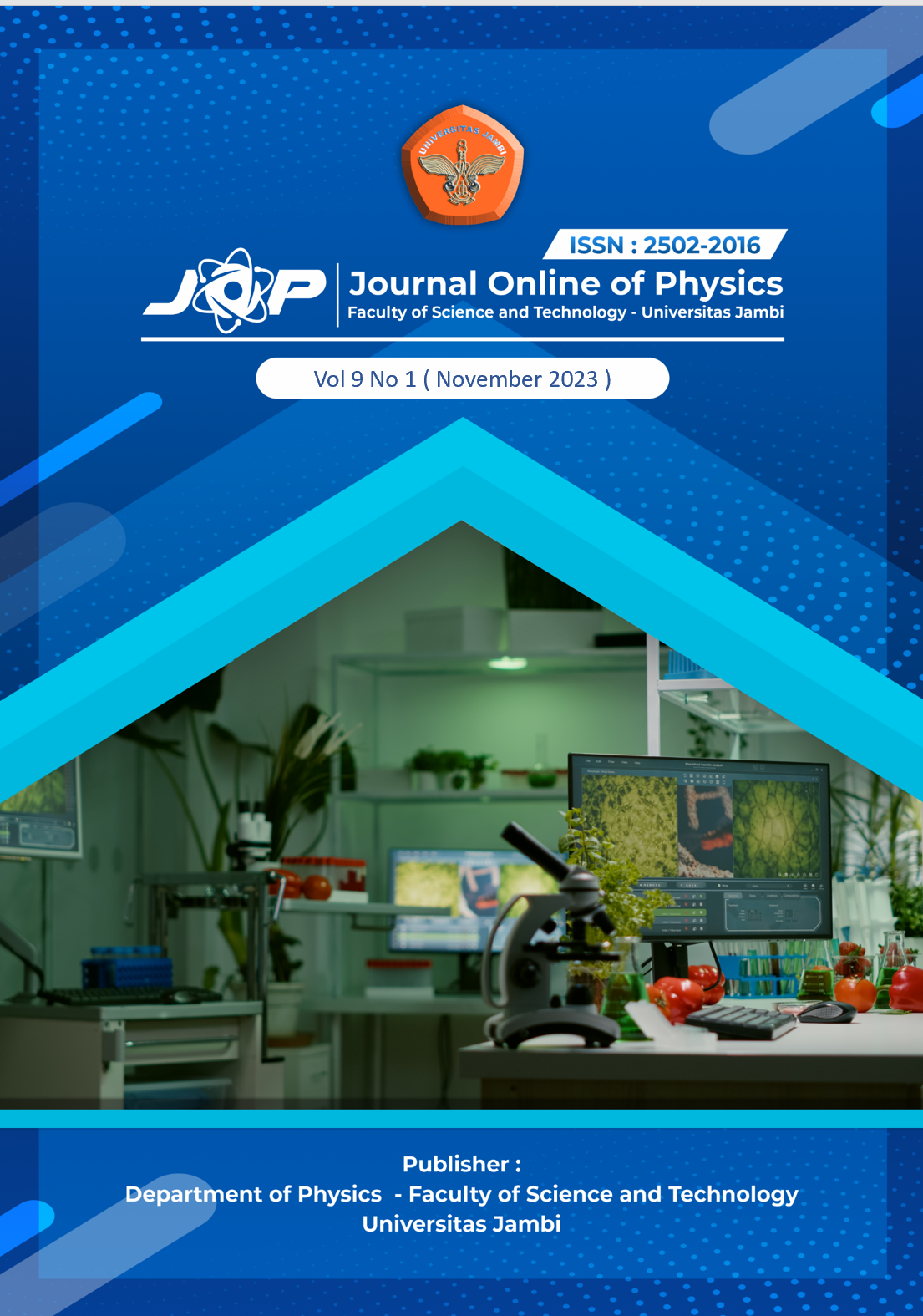ANALISIS KERENTANAN TANAH FAKULTAS SAINS DAN TEKNOLOGI UNIVERSITAS JAMBI DENGAN MENGGUNAKAN DATA MIKROTREMOR
DOI:
https://doi.org/10.22437/jop.v9i1.28788Keywords:
Kerentanan tanah, Metode HVSR, MikrotremorAbstract
Research has been carried out to carry out soil vulnerability analysis at the Faculty of Science and Technology, Jambi University. The construction of buildings at the Faculty of Science and Technology has necessitated an analysis of the vulnerability of the land around the buildings at the Faculty of Science and Technology. Based on the regional geology in this area, the Muara Enim formation (TMPM) is formed in the Tertiary age which is composed of rocks from interbedded tuffaced sandstones with tuffaced mudstones, interbedded quartz sandstones with quartz mudstones, interbedded with coal and iron oxide. The rocks formed in this formation are a type of sedimentary rock. To carry out soil vulnerability analysis, the HVSR method is applied to measure microtremors. Microtremors are a geophysical method that uses very small and continuous ground vibrations. This HVSR method is a passive seismic method using three components, namely 2 horizontal components and 1 vertical component. Microtremor measurements on the ground were carried out at 6 points around the building. The results obtained from microtremor measurements using the HVSR method are the natural frequency (f0), amplification factor (A0) and Seismic Vulnerability Index (Kg). The natural frequency (f0) value ranges from 1.30-1.82 Hz, the amplification factor (A0) value ranges from 1.69 - 3.28 times and the seismic vulnerability index (kg) value ranges from 1.814167 to 5.948834 x 10^-6 s^2/cm. Based on the Kanai classification, a frequency value < 2.5 HZ includes soil type IV and soil type II with Alluvial Rock lithology formed from delta sedimentation, top soil, mud. With a depth of 30 meters or more. This area has a very thick surface sediment, more than 30 meters. Based on the classification according to Setiawan, the amlification factor is classified as low (A0<3) to medium (3<A0<6). A low to moderate amplification factor indicates that the rock that makes it up is compact/hard. Based on the Refrizon Classification, the Seismic Vulnerability Index value is in the low (kg<3) to medium (3<kg<6) category. The seismic vulnerability index is low to medium, meaning that if a shock occurs there will be no damage because the vulnerability value is medium - low. Based on these three parameters, it can be concluded that the land around the FST building is still classified as safe from shocks.
Downloads
References
Afnimar, (2009). Seismologi. Edisi Pertama. Bandung: Institut Teknologi Bandung.
Ayi,V.W, dan Bahri,S. (2012). Analisis Mikrotremor untuk Evaluasi Kekuatan bangunan Studi Kasus Gedung Perpustakaan ITS. Jurnal Sains dan Seni ITS Vol. 1, No.1. Hal B 52- B 56.
De Coster, G. L. (1974). The geology of the central and south Sumatra basins. Gosar, A. (2007). Microtremor HVSR Study for Assessing Site Effects in the Bovec
Basin (NW Slovenia) Related to 1998 Mw 5.6 and 2004 Mw 5.2 Earthquake.
ELSEIVER Engineering Gelogy, 91(3) 178-193.
Gosar, A. (2010). Site effects and soil-structure resonance study in the Kobarid basin (NW Slovenia) using microtremors. Natural Hazards and Earth System Sciences, 10(4), 761–772.
Mangga, S. A., Santoso, S., dan Herman, B. (1993). Peta Geologi Lembar Jambi Sumatera. Pusat Penelitian dan Pengembangan Geologi, Bandung, Jawa Barat.
Nakamura, Y. (2000). Clear identification of fundamental idea of Nakamura’s technique and its applications. Proceedings of the 12th World Conference on Earthquake Engineering, 24, 25–30.
Satria. A., N. Larasati., W. Lestari., I. K. Dewi. 2020. Analisis Mikrotremor Berdasarkan Metode Horizontal to Vertical Spectral Ratio Untuk Mengetahui Indeks Kerentanan Seismik Kota Jambi. Universitas Jambi. Jambi.
SESAME, (2004). Guedilines for The Implementation of The H/H Spectral Ratio Tecnique on Ambient Vibrations. European Commission : Research General Directorate.
Downloads
Published
How to Cite
Issue
Section
License
Copyright (c) 2023 JOURNAL ONLINE OF PHYSICS

This work is licensed under a Creative Commons Attribution 4.0 International License.











